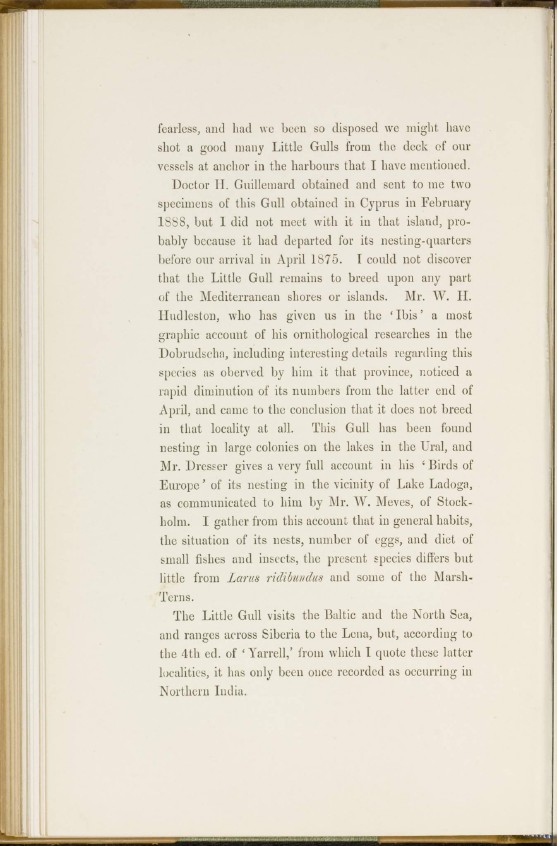
fearless, and had we been so disposed we might have
shot a good many Little Gulls from the deck of our
vessels at anchor in the harbours that I have mentioned.
Doctor II. Guillemard obtained and sent to me two
specimens of this Gull obtained in Cyprus in February
1SS8, but 1 did not meet with it in that island, probably
because it had departed for its nesting-quarters
before our arrival in April 1875. I could not discover
that the Little Gull remains to breed upon any part
of the Mediterranean shores or islands. Mr. W. II.
Hudleston, who has given us in the 'Ibis' a most
graphic account of his ornithological researches in the
Dobrudscha, including interesting details regarding this
species as oberved by him it that province, noticed a
rapid diminution of its numbers from the latter end of
April, and came to the conclusion that it does not breed
in that locality at all. This Gull has been found
nesting in large colonies on the lakes in the Ural, and
Mr. Dresser gives a very full account in his 'Birds of
Europe' of its nesting in the vicinity of Lake Ladoga,
as communicated to him by Mr. W. Meves, of Stockholm.
I gather from this account that in general habits,
the situation of its nests, number of eggs, and diet of
small fishes and insects, the present species differs but
little from Lams ridibundus and some of the Marsh-
Terns.
The Little Gull visits the Baltic and the North Sea,
and ranges across Siberia to the Lena, but, according to
the 4th ed. of ' Yarrell,' from which I quote these latter
localities, it has only been once recorded as occurring in
Northern India.